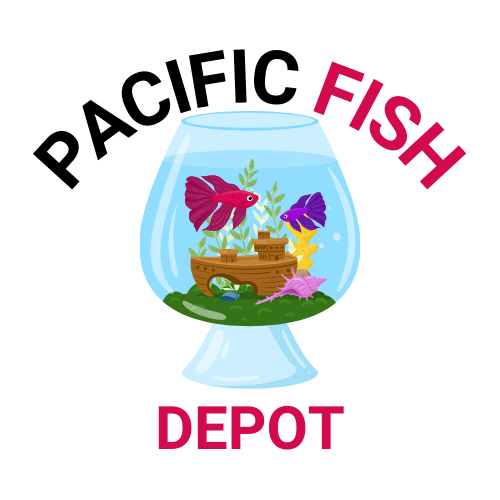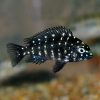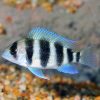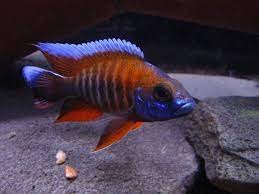No products in the cart.
Caudopunctatus Cichlid (Neolamprologus caudopunctatus)
The Caudopunctatus Cichlid is a small yet striking species from the rocky and sandy shorelines of Lake Tanganyika in East Africa. Known for its shimmering silver body adorned with tiny iridescent spots and a distinctive lyre-shaped tail, this fish offers a subtle beauty that reveals itself when light catches its scales. Males often display brighter colors and slightly longer fin extensions, making them a standout in a well-maintained aquarium.
This species is admired for its peaceful yet confident nature, making it an excellent choice for aquarists who want a Tanganyikan cichlid that is less aggressive than many of its relatives. In the wild, Caudopunctatus are found hovering close to the lake’s sandy bottom near rocky outcrops. They use these areas for shelter, breeding, and foraging.
In the aquarium, they thrive in setups that combine both sandy substrate and rock structures with caves or crevices. This layout allows them to behave naturally—sifting through sand for food and using rock shelters for protection. A tank size of 20–30 gallons or more is suitable for a small group, though larger tanks allow for more dynamic social interactions.
Water quality is key, as they prefer Lake Tanganyika’s unique conditions: pH 7.8–9.0, medium to high hardness, and temperatures between 24–27°C (75–80°F). They adapt well to a mixed diet of high-quality cichlid pellets, frozen foods like mysis shrimp and cyclops, and occasional live offerings. Their balanced temperament also makes them suitable for community setups with other small to medium Tanganyikan species.
Breeding the Caudopunctatus is a rewarding experience for aquarists. They are biparental substrate spawners, with both parents actively guarding and tending to the eggs and fry. With proper care, these cichlids can live for 8–10 years, providing years of graceful beauty and engaging behavior.
❓ Frequently Asked Questions (FAQs)
1. How big do Caudopunctatus Cichlids get?
They typically grow to about 3–4 inches in length.
2. Are they aggressive?
They are generally peaceful for a cichlid, though they will defend breeding territories.
3. What should I feed them?
A mix of high-quality pellets, frozen foods, and occasional live treats.
4. Can they live with other fish?
Yes, they do well with similarly sized Tanganyikan cichlids.
5. How long do they live?
With proper care, they can live for up to 10 years.















Reviews
There are no reviews yet.